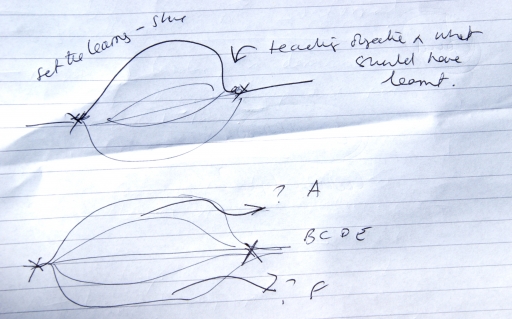Between formal and informal learning design styles
Highly prescriptive vs call up the information you need as you go along. So defined instructions vs figuring it out for themselves. Perhaps using tools to guide and inform. We were given the simplest of tasks, teaching students how to cross a busy road in safety.
I made a point about any group requiring leadership or a champion.
I made a point on Randy Pausch whose 3D lecture series included mixing up student groups who then had to vote on each other's levels of collaboration in the group.
There was a discussion on informal peer assessment that I didn't entirely follow, certainly my notes are somewhat cryptic. Hopefully the session was recorded so I can listen back.
It is the unexpected insights in a synchronous session that prove valuable, especially the asides in the break-out room.
Assemble the books and papers you plan to refer to ahead of writing.
This is a new one to me. I prefer to write what I want and deal with the referencing after rather than fitting the assignment to the books and papers.
Perhaps a combination of the two is required.
The learning plan you produce may not be followed closely given the myriad of ways people respond. Many are drawn in by the assessment but not all.
Can such divergent styles be accommodated?
As the Elluminate discussion progressed, four students, one tutor moderator, I did a doodle.

Having shared the idea I then corrected it.
From Wenger (1998:233)
'There is an inherent uncertainty between design and its realization in practice, since practice is not the result of design but rather a response to it'.
Phenomonology explains why people may still be adrift of the desired response.
The notes reads 'design as well as we can ... 'the students share the outcome. We set the learning, that is then displaced to or set in the context of each learner. We might have a learning objective, but students can and diverge from this'. (A good thing if you want diversity and originality)
As a learning designer you have to anticipate a variety of behaviours and plan for not too many being wildly divergent. This can be achieved by understanding the students.